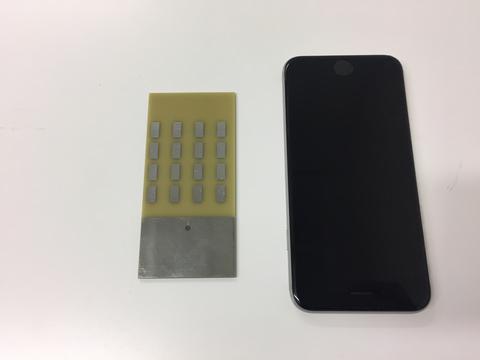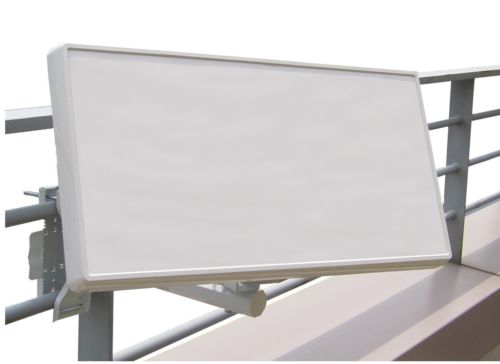I can easily see myself getting really hooked into this new radio/TV/data digital satellite hobby. LOL

–Konrad, WA4OSH
I can easily see myself getting really hooked into this new radio/TV/data digital satellite hobby. LOL

–Konrad, WA4OSH
No SDR. Just not useful for the type of modulation and bitrates we will support.
Donde,
Here’s an interesting graphic of what i expect to see with the SDR. Each transponder on the satellite can carry its own signals. @Syed confirmed that Outernet will be using SCPC signal(s) like the one on the right.

Source: The hitchhikers guide to SCPC reception [06 June 2001]
–Konrad, WA4OSH
I don’t think a BPF after the LNB would be productive, as the LO drift would make the signal wander around relative to the BPF. If you get an LNB with a reference-clock input ($$$), you could do it, but even the PLL LNBs are gonna have some drift.
It’s my understanding that the SDR should have no trouble as long as the signal strengths across the passband aren’t totally blowing each other out. You’d need a filter if you wanted to knock out some signal that was swamping its neighbor, but as long as it all fits within the ADC’s dynamic range, the software demodulator should have no trouble with it.
Now, the dedicated receiver chip on the DC3, we’re assuming is a DVB-S2 chip, which should also be quite capable of handling whatever mess you normally find on satellite bands, but what techniques it uses, we have no idea of. I don’t believe there’s any need for anything you wouldn’t normally find in a satellite receiver setup.
The BPFs in the diagrams above are inside of the LNB already. Their purpose are to limit signals from outside of the satellite’s bandwidth from interfering with the satellite signal. But you will need a narrower filter later in the receiver chain. That’s done either by software or hardware on the IF or baseband signal.
The SDR has two limits: 1) MIPS (horsepower) to compute everything and 2) Dynamic range.
Yes, it may be a dedicated receiver chip designed for SCPC, not MCPC or broadband video signals.
–Konrad, WA4OSH
So nobody ever thought to use an LNB without a dish and just transmit at a lower bit rate, then?
Seems like most of the L-band conveniences can be obtained on a cheaper Ku-band transmission.
Is there not something else at play?
@Syed i saw on the new site that i has a 1ghz prozessor with 512mb ram. Are you using the same SOC as before or another one? Also: Is that Hardware really future proof?
regards,
Manuel
Again, my concern is that a raw LNB does not have a narrow enough beamwidth. We’ll end up getting interference from neighboring satellites that are on the same frequency and polarity.
We might find out that the little circuit board to the left of the smart phone is a 16-element Ku patch antenna for the LNB. I don’t know what it is 

–Konrad, WA4OSH
That is, in fact, a 16-element Ku patch antenna.
It would not surprise me if something like that was inside one of these flat Selfsat Ku-band antennas.


–Konrad, WA4OSH
So the MK-1 LNBF I recently received may not be as good as the Selfsat shown above? I knew it!  Speed of Technology. One can never keep up!
Speed of Technology. One can never keep up!
 like the new site and progress looks good cant wait to get my hands on the new gear also why only 1 usb port
like the new site and progress looks good cant wait to get my hands on the new gear also why only 1 usb port 
No, don’t worry about the SelfSat, as they are really expensive.
Got a frequency in mind so we can test our dishless antennas?
No, not yet. We still need to finalize the beam, then we get assigned a frequency. It will definitely be be high band, but still working out the details. We are signing by the end of the year.
No problem Syed. In your testing, did you see a low data rate channel from Galaxy 28 or another bird that would be similar to what we will see next year? Not interested in decoding. Just a reasonable SNR. Going to set up tomorrow.
Well, when you view the carrier activity through a spectrum analyzer, there is no way of telling which are low bitrate or not. The only thing you see is the carrier itself and the shape of the carrier. A 1 MHz carrier is the low end of what you’ll usually see. At the very top end is a full 36 MHz, which is very likely a set of TV channels that a re multiplexed onto a single carrier (known as MCPC).
Shannon-Hartlney Theorem
C = maximum data rate of channel
W = bandwidth of channel
S = signal-to-noise ratio
C = W log2(1 + S)
If you want to keep the same SNR, you will need more bandwidth to send a higher bitrate. Conversely, a higher bandwidth signal can support a higher data rate or a better SNR. it also means that the maximum possible data rate is limited by the bandwidth of the transmission channel.
The signal itself will tell you what order of modulation it is. Once you know that, you can determine the bit rate.
–Konrad, WA4OSH
Thanks Syed and Konrad. I’ll see what I can see. 
My Maverick is waiting in my mailbox. I will be signal hunting too with my SDRs later this weekend with my Airspy R2.
–Konrad, WA4OSH